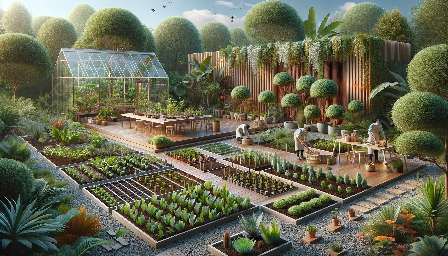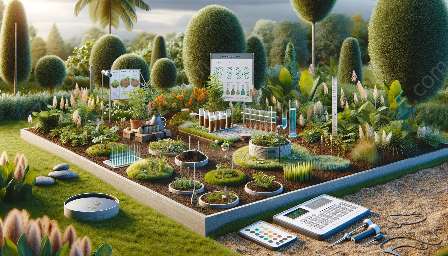Soil science is a multidisciplinary field that encompasses the study of soil as a natural resource, its formation, classification, and its many connections to horticulture, agriculture, and forestry. Understanding soil composition, types, properties, and their impact on plant growth and ecosystem sustainability is crucial for professionals and enthusiasts in these fields.
The Foundation of Horticulture
Soil science plays a pivotal role in horticulture, as it directly impacts the growth, development, and overall health of plants. The physical, chemical, and biological properties of soil influence its suitability for different horticultural practices, such as landscaping, gardening, and ornamental plant cultivation. By understanding the soil's composition and properties, horticulturists can optimize plant growth and maximize the aesthetic and functional aspects of landscapes and gardens.
Soil Composition
Soil is a complex mixture of mineral particles, organic matter, water, air, and countless microorganisms. The physical composition of soil, including its texture, structure, and porosity, determines its ability to retain water, nutrients, and support plant roots. Understanding the composition of soil is essential for horticulturists to make informed decisions about plant selection, soil amendments, and irrigation practices.
Types of Soil
Soils vary greatly in their composition, and they are commonly categorized based on their dominant particle sizes as sand, silt, or clay. Each soil type has unique characteristics and affects plant growth differently. Additionally, soil classification systems, such as the USDA soil taxonomy, provide valuable insights into the properties and behaviors of different soil types, aiding horticulturists in selecting appropriate plants and cultivation methods.
Soil Properties and Plant Growth
The chemical and biological properties of soil, including its pH, nutrient content, and microbial communities, profoundly influence plant growth and development. By analyzing soil properties, horticulturists can tailor fertilization, pH adjustment, and organic matter additions to create optimal growing conditions for different plants and horticultural crops.
Environmental Sustainability
Effective soil management in horticulture is essential for promoting environmental sustainability. Practices such as minimizing soil erosion, using organic amendments, and implementing water-saving techniques not only benefit plant health but also contribute to the conservation of natural resources and the preservation of ecosystems.
Soil Science in Agriculture and Forestry
Soil science is equally vital in the fields of agriculture and forestry, where the sustainable use of soil resources is essential for food production, timber cultivation, and ecological balance. Farmers, agronomists, and foresters rely on soil science to optimize land productivity, enhance crop yields, and maintain the health of forest ecosystems.
Soil Fertility and Crop Production
Understanding soil fertility and nutrient management is fundamental in agriculture. Soil science enables farmers to assess nutrient deficiencies, develop appropriate fertilization plans, and implement sustainable agricultural practices. Additionally, soil analysis and fertility assessments play a key role in maximizing crop yields while minimizing environmental impacts.
Soil Conservation and Management
Agricultural and forestry practices must prioritize soil conservation and sustainable land management. Soil science provides valuable insights into erosion control, soil structure preservation, and the mitigation of soil degradation caused by intensive farming or forestry activities. Proper soil management strategies help maintain soil health, prevent nutrient loss, and safeguard the fertility of agricultural and forest lands.
Forestry and Soil Ecology
In forestry, understanding soil ecology and its influence on tree growth, root development, and nutrient cycling is critical for sustainable forest management. Soil science aids foresters in selecting suitable tree species, implementing reforestation efforts, and preserving the long-term productivity and biodiversity of forest ecosystems.
Conclusion
Soil science is an indispensable field that underpins the success of horticulture, agriculture, and forestry. By delving into the intricacies of soil composition, types, properties, and their broader impacts, professionals and enthusiasts in these fields can make informed decisions, enhance productivity, and contribute to the sustainable management of natural resources.



